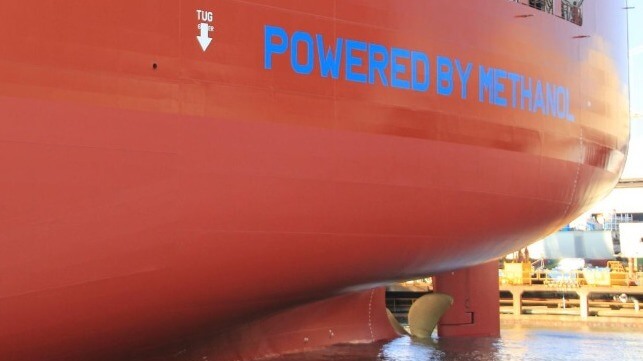Study: Shipping Decarbonization Will be Delivered by Multiple Fuels

Nudged by regulations, customer demand, investor pressure and internal goals, shipping companies are experimenting with a range of greener fuels. But which candidate will deliver a carbon free future for the shipping sector?
To find out how industry leaders are thinking about future fuels, the Global Center for Maritime Decarbonization, the Global Maritime Forum and the Maersk Mc-Kinney Center for Zero Carbon Shipping (with analytical support from Mckinsey) conducted a survey of shipping companies.
These included 29 shipping companies that operate fleets ranging from container ships to cruise ships, bulkers, gas carriers and offshore vessels. Collectively, the companies comprise around 20 percent of the world’s total capacity.
A key takeaway from the survey is that the respondents expect a world with a wide range of fuels in the mix through 2050. Many respondents expect their fleets to run on multiple types of fuels into the future.
For instance, respondents’ projections for their fleet fuel consumption in 2050 are split evenly among a wide range of options. Green ammonia, biodiesel and fuel oil lead the way with 16 to 17 percent of the fuel mix each, followed by blue ammonia, liquefied natural gas (LNG), e-methanol, biomethanol, biomethane and e-methane, each representing a 6 to 10 percent share.
“This suggests that shipping’s route to decarbonization could be complex- especially given the knotty interdependence between ship owners and operators, ports, engine manufacturers, and fuel providers. How the industry builds out and manages multiple fuel supply chains over the next decades will have a decisive effect on the speed at which it decarbonizes,” notes one of the survey findings.
It is no surprise that one-third of the respondents said that they do not know which types of fuel they expect their fleets to run on in 2030 and 2050. The remaining two-thirds of respondents expressed diverging expectations about what their 2030 and 2050 fuel usage will look like. They project that 66 percent of their fuel consumption in 2030 will be fuel oil, with biodiesel and LNG representing 10 percent each, and the remaining 14 percent distributed across other fuels.
Meanwhile, results of another green-fuel study were released last week, this one conducted by the environmental consultancy Ricardo and DNV for the IMO Future Fuel and Technology Project (FFT Project).
The study was commissioned in 2022 following a request by MEPC 78, with a view to supporting the revision process of the initial IMO GHG Strategy.
One of the key findings of the study is that a clear signal of demand is needed to enable sufficient availability of green fuels. The signal of demand could come from the forthcoming Revised IMO GHG Strategy setting revised levels of ambition in combination with the policies needed to drive transition to green shipping.
Most importantly, to reach the decarbonization trajectories in 2050, an average annual growth rate in candidate fuel production of 6-12 percent will be needed beginning in 2030, which is below the historical sustained growth rates for solar and wind power generation.
